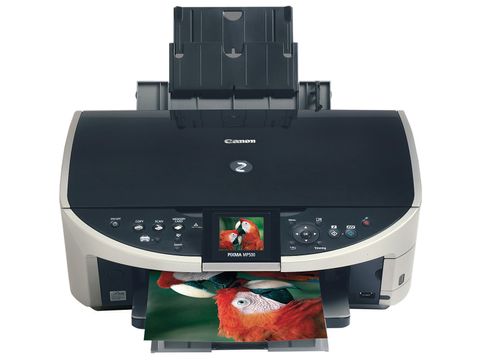TechRadar Verdict
The MP500 is every inch a winner
Why you can trust TechRadar
This mighty beast from Canon literally puts some MFDs in the shade, being about twice the size of some of the more compact models on the market. It's more than worth every square centimetre of space though.
One of the problems with inkjet printing is that for fast, high quality output with black text, a four-ink process is best, whereas for photo printing, you really need the extra colour range of a six-ink system. Some printers go down one route or the other, while others demand that you swap cartridges around depending on the type of print job.
Building on the success of printers like its i865 and iP4000, Canon's MP500 is based on a unique five-ink system that uses a dye-based black ink as well as a pigment-based black in the mix. The result is fast, accurate general-purpose printing and photo prints that are so rich in contrast and colour that, for our money, they're actually better than the results from many six-ink printers.
The all-rounder nature of the MP500 is extended by its superb CIS scanner. The quality of this unit is excellent and a testimony to the fact that Canon is the only manufacturer of the group who markets this type of scanner in standalone form. Coupled with a large 2.5-inch colour LCD screen, multi-format card reader, thoroughly versatile standalone controls and immaculate build quality, the MP500 is every inch a winner.
Tech.co.uk was the former name of TechRadar.com. Its staff were at the forefront of the digital publishing revolution, and spearheaded the move to bring consumer technology journalism to its natural home – online. Many of the current TechRadar staff started life a Tech.co.uk staff writer, covering everything from the emerging smartphone market to the evolving market of personal computers. Think of it as the building blocks of the TechRadar you love today.

